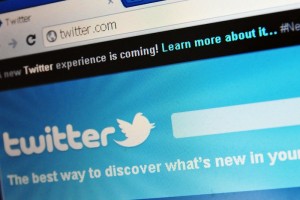 When it comes to PR, one of the hardest things to determine is its impact. How many people saw your great article that appeared in The Wall Street Journal, and it did it lead to an increase in revenue? But with the rise of social media, it is becoming easier. Thanks to social media and its analytic tools, we are now able to measure the number of people who are coming to our social media platforms, how often and their interaction on the site.
When it comes to PR, one of the hardest things to determine is its impact. How many people saw your great article that appeared in The Wall Street Journal, and it did it lead to an increase in revenue? But with the rise of social media, it is becoming easier. Thanks to social media and its analytic tools, we are now able to measure the number of people who are coming to our social media platforms, how often and their interaction on the site.

Social media has become a powerful tool for PR professionals. It is allows us to reach out to consumers directly, build relationships and increase the overall credibility for a brand. And it is through this direct interaction with consumers that we are now able to easily identify and cultivate brand ambassadors. Brand ambassadors are individuals who are enthusiasts about a particular company or product. They have a strong social presence, they willingly promote their experiences with a brand to their social circles, and in doing so, expand a company’s reach to various social networks. They are an influential group of individuals who can help grow online presence and increase overall exposure.
One question PR professionals often struggle with is how to identify the most appropriate platform to develop an organization’s brand ambassadors. In my experience, there are four major social media platforms that are important to understand: Facebook, Twitter, LinkedIn and Pinterest. Each one offers different benefits, but knowing how best to communicate on each one provides the possibility to tap into a whole new audience base.
When it comes to Facebook for an organization, engagement is everything. Let’s face it: at the end of the day, you can buy “likes” for your Facebook page. However, if you are an organization that is trying to connect to the consumer and build a relationship, what really matters is interaction on the site. Are consumers coming to your page? Are they interacting with the content you post? If not, then step number one is figuring out the type of content that resonates best. For instance, does the audience like polls or responding to questions? Finding out who the audience is and what makes them tick is essential. It is important to note this often requires a trial and error of different types of content.
I recently experienced great success with this process with a golf client that I worked with. The problem: customers were coming to the page and “liking” it, but nothing was happening. They were not commenting, nor were they sharing content to their social networks. Through the trial-and-error method, we were able to figure out the type of content that the golf audience enjoys. The answer: golfers love to talk about themselves, and so we established posts that allowed them to brag about their game. The result: the company’s social presence increased by 458 percent, and its social interaction with brand ambassadors increased by 1,837 percent in just 10 weeks!
Twitter is great platform for real-time engagement. Whether you are a business-to-business organization or one that interacts directly with the consumer, having a Twitter presence is imperative. It’s not just consumers who are involved on this platform — your partners, competitors and even key media are present, too.
When it comes to Twitter, I have noticed that a lot of organizations try to plan out posts in advance by developing a social media editorial calendar. This is a great first step, but with a platform like Twitter, you never know what the trending topics of the day will be. Real-time engagement on Twitter allows you to tie into top conversations and start developing relationship with your followers, who often include consumers as well as key media contacts. For instance, I recently had a client applying for a top industry award within their field, and one of the new elements to the voting process was Twitter votes. Competition was fierce, but thanks to the company’s constant interaction on the platform, it landed in first place.
Another example is centered on tradeshows. Like multiple PR pros in the green industry, I have multiple clients attending the tradeshow Greenbuild this year. Leveraging Twitter and the hashtag #Greenbuild, we were able to promote our companies’ presence at the upcoming conference, interact with others attending the event and even schedule in-person meetings with journalists.
LinkedIn is a fantastic forum to establish and build thought leadership. The purpose of LinkedIn is to connect with other individuals in your field; it is not a place to promote your product or company. Instead, companies should be joining groups, engaging in conversations and even researching top editors to learn what they are interested in.
In addition to building engagement, it is also important for every company to have a profile page on LinkedIn because it assists with SEO. But like everything else on social media, it is also important to keep that page updated and accurate. Also, be sure to monitor your employees’ pages as well, as you never know when a potential client or journalist could be checking it out.
Pinning has become the new fad, and as a result, companies are trying to figure out how to tap into this booming platform. When establishing a presence on Pinterest, you must first think visual. What image best tells the messaging you are trying convey? After all, a picture is worth a thousand words, right? Once again, I will refer back to my golf client. Pinterest was the perfect platform for us to develop boards of great golf getaways for bachelor parties and even family vacations.
Pinterest is also a great platform to hold contests. Unlike Facebook, Pinterest has fewer restrictions when it comes to contests. I recently came across a contest developed by Pier 1 Imports where consumers were asked to build boards of their favorite Pier 1 products. The best board would receive a shopping spree from Pier 1. This contest not only drove people to their website, but it forced individuals to pick out products that fit their very own interest – genius!
Social media is not just an added bonus to traditional PR, it is becoming a part of our everyday practices. From tech to medical to green to consumer, there is a spot for every company in social media. They key is just identifying which platform is best for your audience. In doing so, the potential is there to tap into a large and powerful group of consumers, partners and even journalists.
The Best Tools in Social Media
- Facebook Insights – You can bet Facebook’s own analytics tool will measure the success of a campaign. Check out the virility and popularity of your posts.
- Sysomos – Although this tool comes with a price, it is great for identifying key social media influencers as well as sentiment on social media commentary.
- Social Mention – This free tool provides a basic snapshot of the social media conversations.
- Muck Ruck – This tool allows you to easily identify which journalists are active in social media and what they are interested in.
- HootSuite – Are you managing social media for multiple clients? This web-based tool allows you to schedule posts and monitor conversations that use keywords.



![Black Friday 2014: Is Your Brand Ready for the Online Rush? [Infographic]](http://cdn2.hubspot.net/hub/53/file-2166364551-png/blog-files/black-friday-2014.png)




